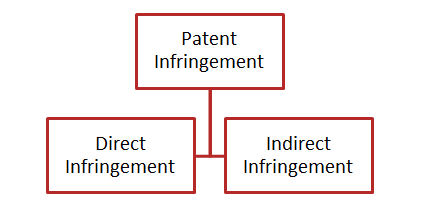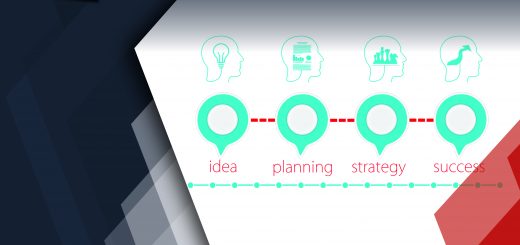Direct and Indirect: Understanding the Types of Patent Infringement
Failing to initiate legal action against patent infringement can have severe consequences, including loss of IP rights. Thus, it is imperative for patent owners to commence litigation as soon as the signs of infringement emerge. But before initiating action, it is critical for patent owners to understand the different types of patent infringement to spot them in the market. The US statute talks of direct and indirect patent infringement and establishes the criteria for the same.
This article covers patent infringement as well as its different types. You will also learn how diligent patent drafting can help you optimize patent protection and avoid all forms of infringement.
Table of Contents
Understanding Patent Infringement
Patent infringement is the act of trespassing on the rights of an inventor. This may include violation by third parties without the consent or license from the patent holder. Patent infringement trials generally revolve around two key aspects. The first of these is the patented invention and is a question of law. This is determined and interpreted by the courts based on the patent elements, such as the specification of the claims and description of the invention, annexed to the court via the granted patent. The second is the fact to be submitted to the court. As a patent confers several rights on the patentee to keep others from practicing the invention, the onus lies on the patentee to show the evidence of patent infringement, either literal or equivalent.
Under 35 US Code § 271, infringement of a patent occurs if any of the following acts are carried out without the consent of the patent holder:
- Except otherwise provided in 35 US Code § 271, if someone without authority uses, makes, offers to sell, or carries out a sale of any patented invention, within the US or imports into the country any patented invention during the term of the patent, infringes a patent.
- Whoever actively induces the infringement of a patent is liable as an infringer.
- Whoever sells or offers to sell within the US or imports a component of a patented machine, manufacture, combination or composition, or material or apparatus for practicing a patented process, comprising a material part of the invention, while understanding the same to be especially adapted or made for utilization in an infringement of such patent, and not to be a staple commodity or article of commerce suitable for significant non-infringing use, is also liable as a contributory infringer.
This statute includes three types of patent infringement: direct infringement, induced infringement, and contributory infringement. Induced and contributory are two different forms falling under indirect infringement. Let us now delve into all the varied types of patent infringement.

Direct Infringement
This type of patent infringement typically occurs when all steps of a claimed method or process are attributable to, or performed by, a single entity. A patent is directly infringed by “whoever without authority makes, uses, offers to sell, or sells any patented invention… during the term of the patent.” Simplifying it further, when a single party practices all elements of a patent claim, there is direct infringement. Direct patent infringement is a wrongful act, and the court of law does not require any finding of the knowledge or any intent to rule in favor of the plaintiff. Courts have interpreted the “uses” broadly so that if a third party utilizes a patented invention, even if all the elements are not present, it is liable for direct infringement. However, for the process claims, the direct type of patent infringement requires the performance of each step by the third party. The difference in treatment of the product claims and the process claims exists even though the patent statute does not differentiate between the kinds of claims.
But what if someone produces a kit having all the elements in the claimed product, and the consumer purchases the kit and assembles it at home?! In that case, neither the sale of this kit nor its assembly constitutes direct infringement. The typical justification in these cases is that the kit does not include all the features and elements of the claimed structure, and the assembly cannot be considered “a business.” However, these acts cannot be overlooked from the perspective of meaningful and comprehensive patent protection. Therefore, we now arrive at a new concept, referred to as indirect patent infringement.
Indirect Infringement
This type of patent infringement is typically observed when a defendant participates in or encourages infringement but does not directly infringe on a patent. Further, the normal recourse under the law is for the court to apply the standards for liability under indirect patent infringement. A plaintiff claiming infringement must prove that the defendant was aware of the existence of a patent and continued to infringe indirectly. The plaintiff can also employ the “willful blindness” argument to prove their case. This requirement is not included in 35 USC § 271, but established by case law.
Indirect infringement is also unique and quite difficult to prove as the infringer does not need to utilize every patent claim to be prosecuted. Moreover, indirect patent infringement is a critical element that one must bear in mind while drafting the patent application. The patent drafter must consider patent claims individually and include all the ways and alternatives the claimed invention can be described, sold, and distributed.
Furthermore, the indirect type of patent infringement can occur in two ways – induced infringement and contributory infringement. Induced infringement is when the infringers attempt to bring about new steps to arrive at the desired result. Moreover, USC § 271(b), which states, “Whoever actively induces infringement of a patent shall be liable as an infringer,” does not express or mention any intent conditions for induced patent infringement. However, the Supreme Court has inferred from the statute that “at least some intent is required.” The concept of induced infringement came into the picture in the Akamai II decision, where the court held the ground that induced infringement could be found even when direct infringement is not.
Contributory infringement is when someone sells a component used in a patented product or process. It requires the party to be aware that the component is “specially adapted” for use in infringing a known patent, and the component is not a “staple article or commodity” that is used for appropriate non-infringing use. In this manner, contributory infringement is different from induced infringement as the former requires the selling or offering to sell a component used to infringe, while the latter has no such requirement.
Conclusion
Direct infringement is a strict liability tort. However, both direct and indirect types of patent infringement require that an accused party or defendant have prior knowledge of the patent of the subject matter. This knowledge requirement is the same and essential for induced and contributory infringement as well. For the plaintiff, a finding of willful blindness is sufficient to prove knowledge of the case before the court. Additionally, direct infringement has been a prerequisite of indirect infringement, and is not explicitly stated in the statute, but is logically implied from various case laws. It is also noteworthy that an act cannot be induced infringement or any contributory infringement until and unless that act has occurred.
In today’s era of fierce market competition, businesses must leave no stone unturned in safeguarding their inventions against all types of patent infringement. Diligent patent drafting can go a long way in serving this purpose. That is why experts recommend availing the patent drafting services of an experienced IP research and consulting company. Sagacious IP, amongst the largest IP solutions providers in the world, offers a gamut of patent-related services to help businesses create, monetize, defend, and expand their portfolios. Click the link above to know more about our patent drafting expertise.
– Pankaj Garg (Engineering Patent Drafting & Prosecution) and the Editorial Team




